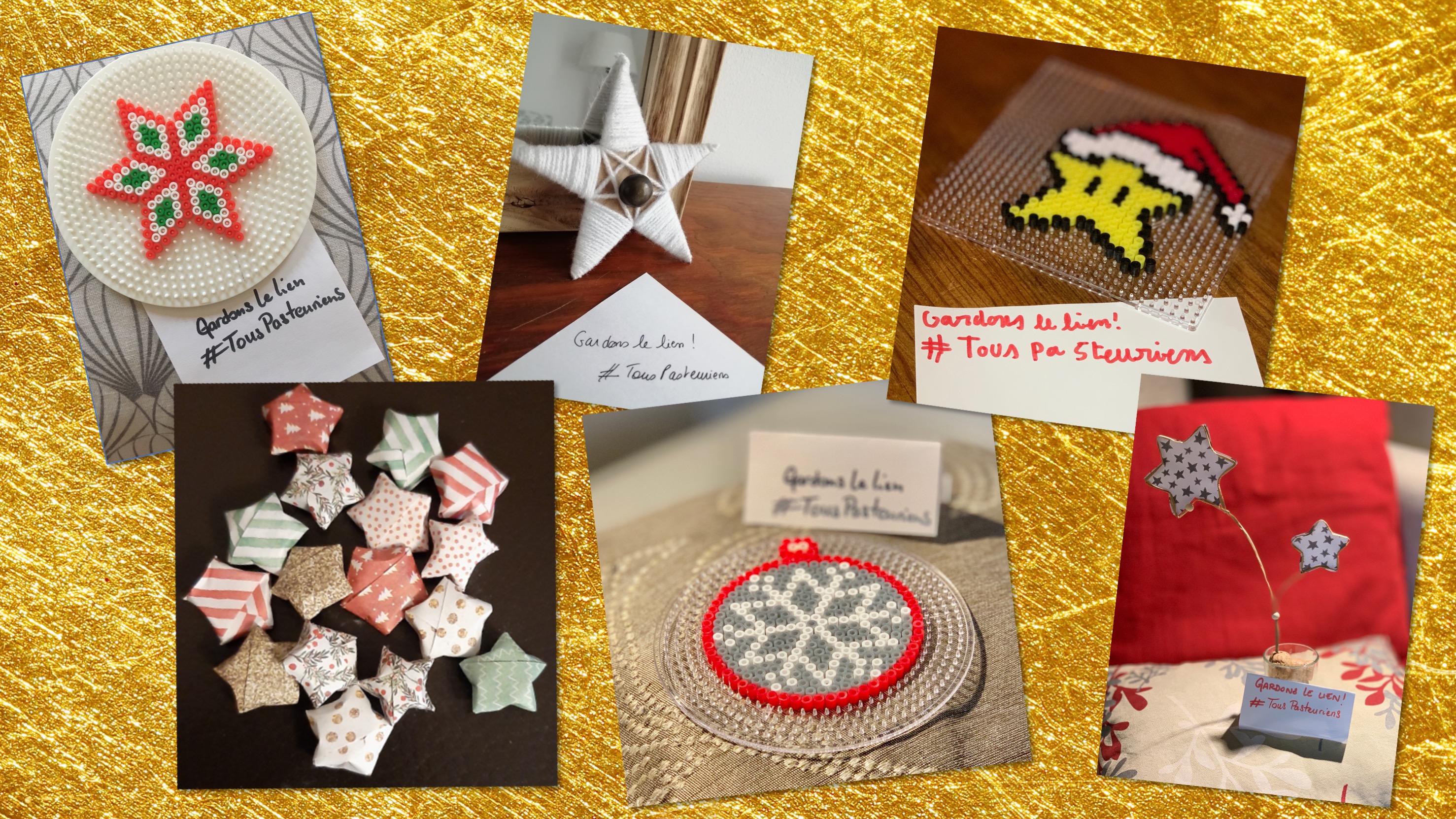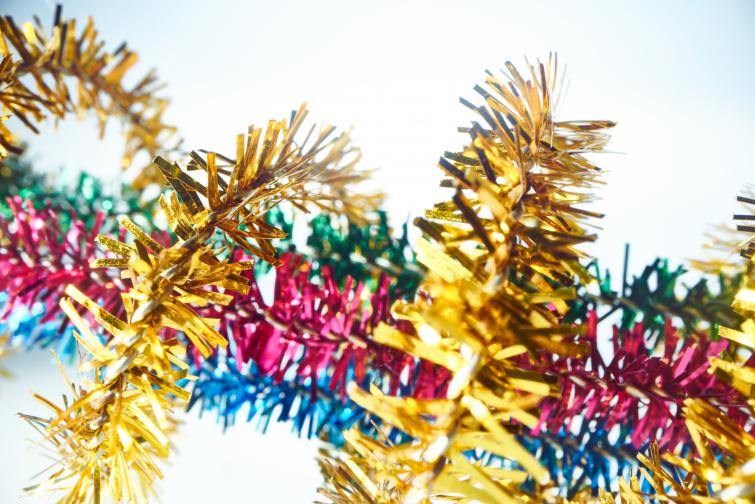
 CORONAVIRUS
CORONAVIRUS
Let's keep in touch – and share some festive cheer for the season: culinary specialties from around the globe, a Christmas Party with a difference and stars in your eyes!
Given the upheavals we have all experienced since March – affecting our working methods, changing our routines and requiring us all to dig deep both individually and collectively –, the upcoming festive season can offer us the prospect of some much-needed joy and peace. And even if this year our celebrations will have a rather different flavor, the newsletter team is determined to share some festive cheer and seasonal goodwill with you at this time!

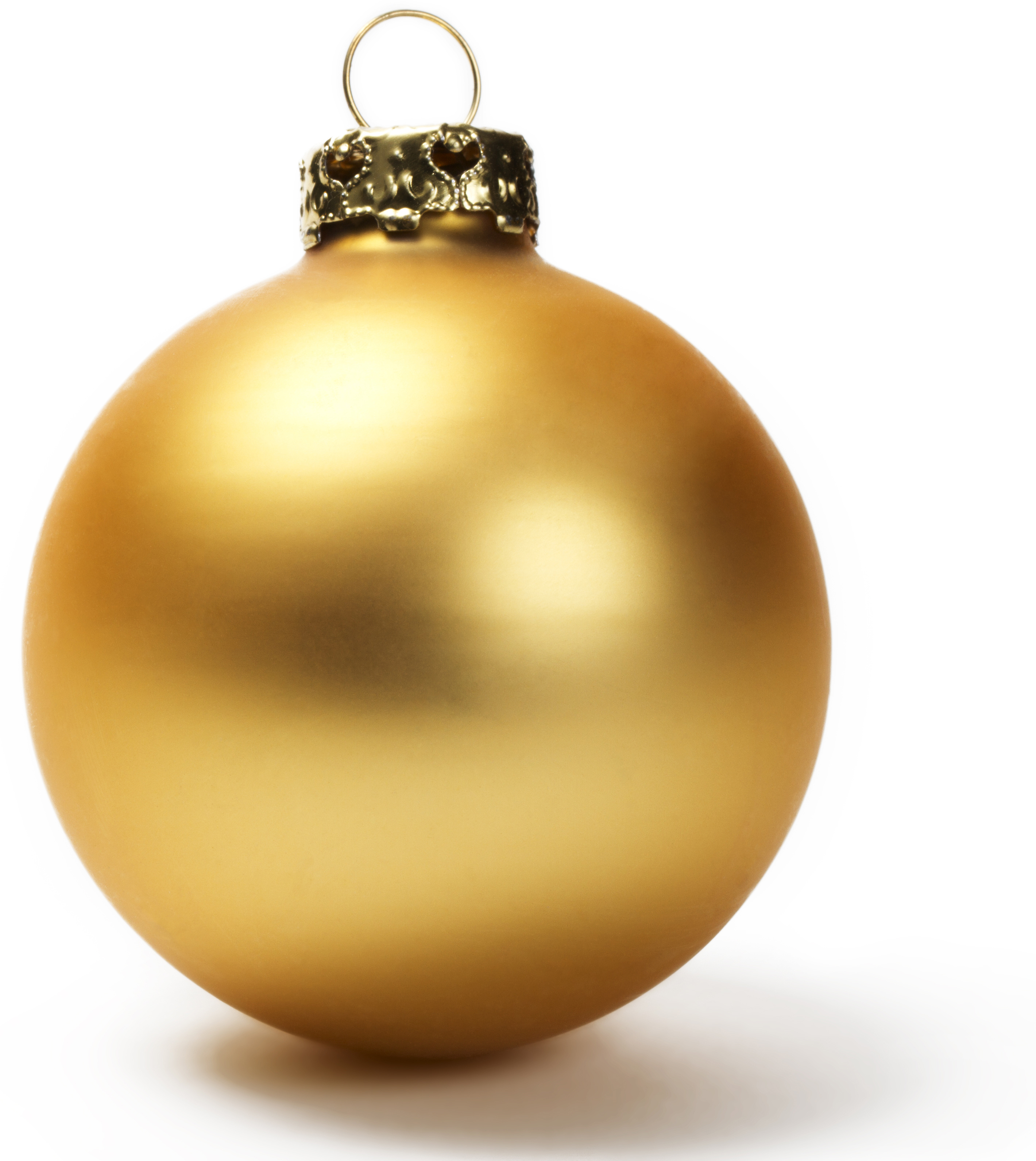 Culinary specialties from around the globe
Culinary specialties from around the globe
So this week, we are inviting you to indulge in some seasonal warmth with a virtual world tour, giving you the opportunity to find out about the culinary specialties that adorn the tables of our colleagues from far-flung destinations. They were keen to transport us to their home countries by sharing a few words about their culture and traditions and giving us a sense of the joy and festivity that characterizes their celebrations as we move from the end of one year to the start of the next!
We hope you will enjoy reading their stories – and why not roll up your sleeves and try your hand at making some of these specialties to give yourself a flavor of the exotic in your own kitchen!
![]()

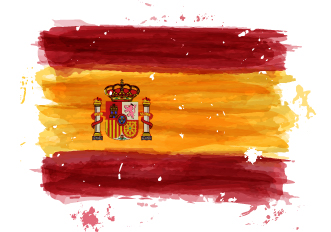
Borja Rodriguez de Francis (Spain)
Post-doctoral in the Structural Studies of Macromolecular Machines In Cellula Unit
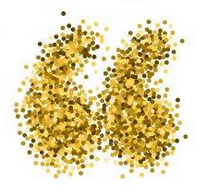 In Spain, the archetypal recipe during the festive period is probably the « roscón de reyes », our version of the galette des rois (or “king cake”). We make it on January 5 to be eaten on January 6 for breakfast or lunch when “the kings” arrive. It’s a bit different from the French galette des rois (it’s better!).
In Spain, the archetypal recipe during the festive period is probably the « roscón de reyes », our version of the galette des rois (or “king cake”). We make it on January 5 to be eaten on January 6 for breakfast or lunch when “the kings” arrive. It’s a bit different from the French galette des rois (it’s better!).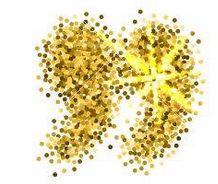
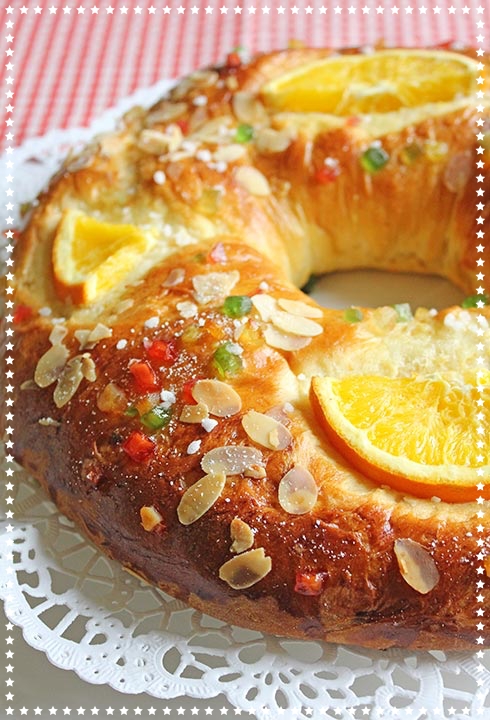
![]()

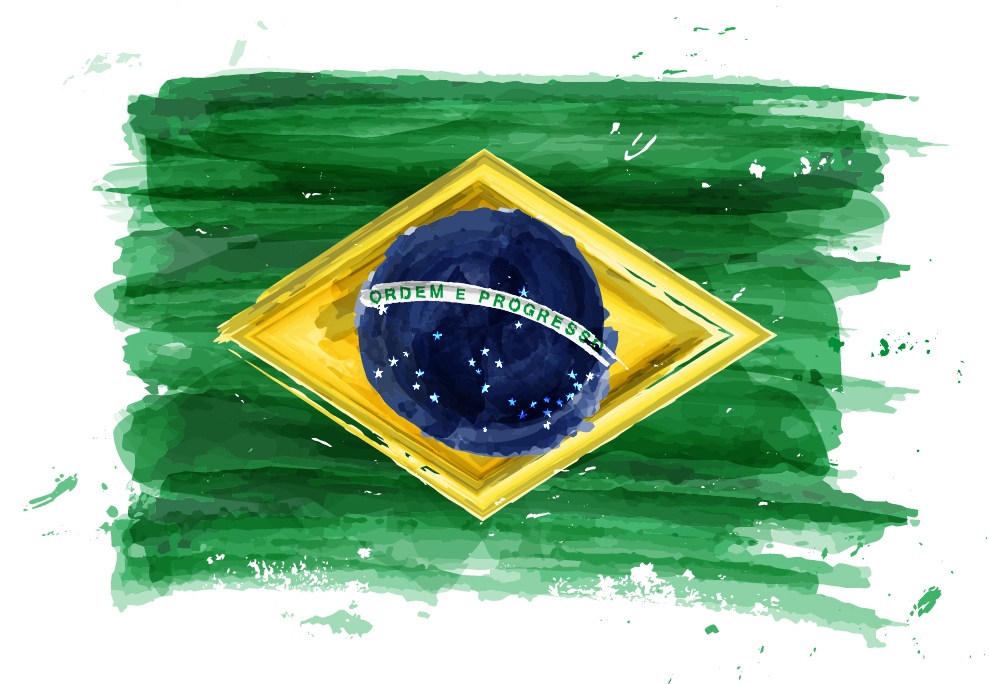
Camilla De Barros Santos (Brazil)
Local HR Department, Human Resources Department

In Brazil, the end of the year comes during summer, and we have a salad that is typical for this time of year known as salpicao.
It is especially popular because it contains a variety of different textures and it's wonderfully fresh at the height of summer.
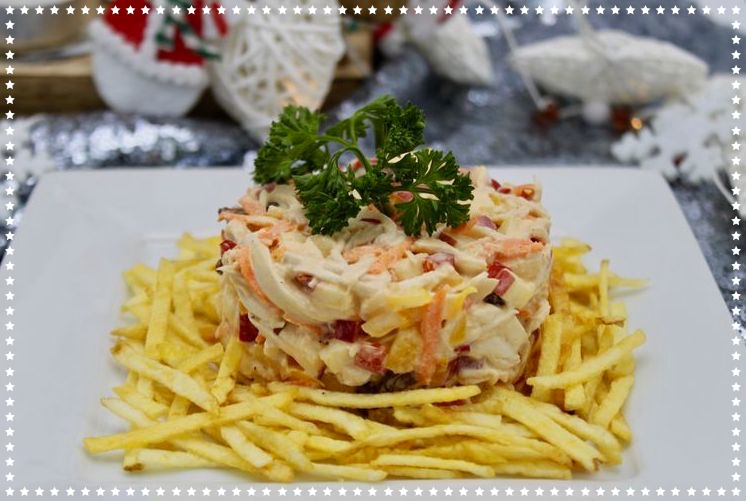
.
![]()


Eliza Jones (United-States)
Editorial Project Manager, Department of Communications and Fundraising

The recipe that inspires me is for gingerbread cookies, in a whole variety of different shapes – little people, Christmas trees, stars – and decorated with pretty white Royal Icing.
Since the United States is made up of people with such a wide range of backgrounds and traditions, it is hard to think of one recipe that everyone always makes during the festive season, but I think this is a good example of that diversity.

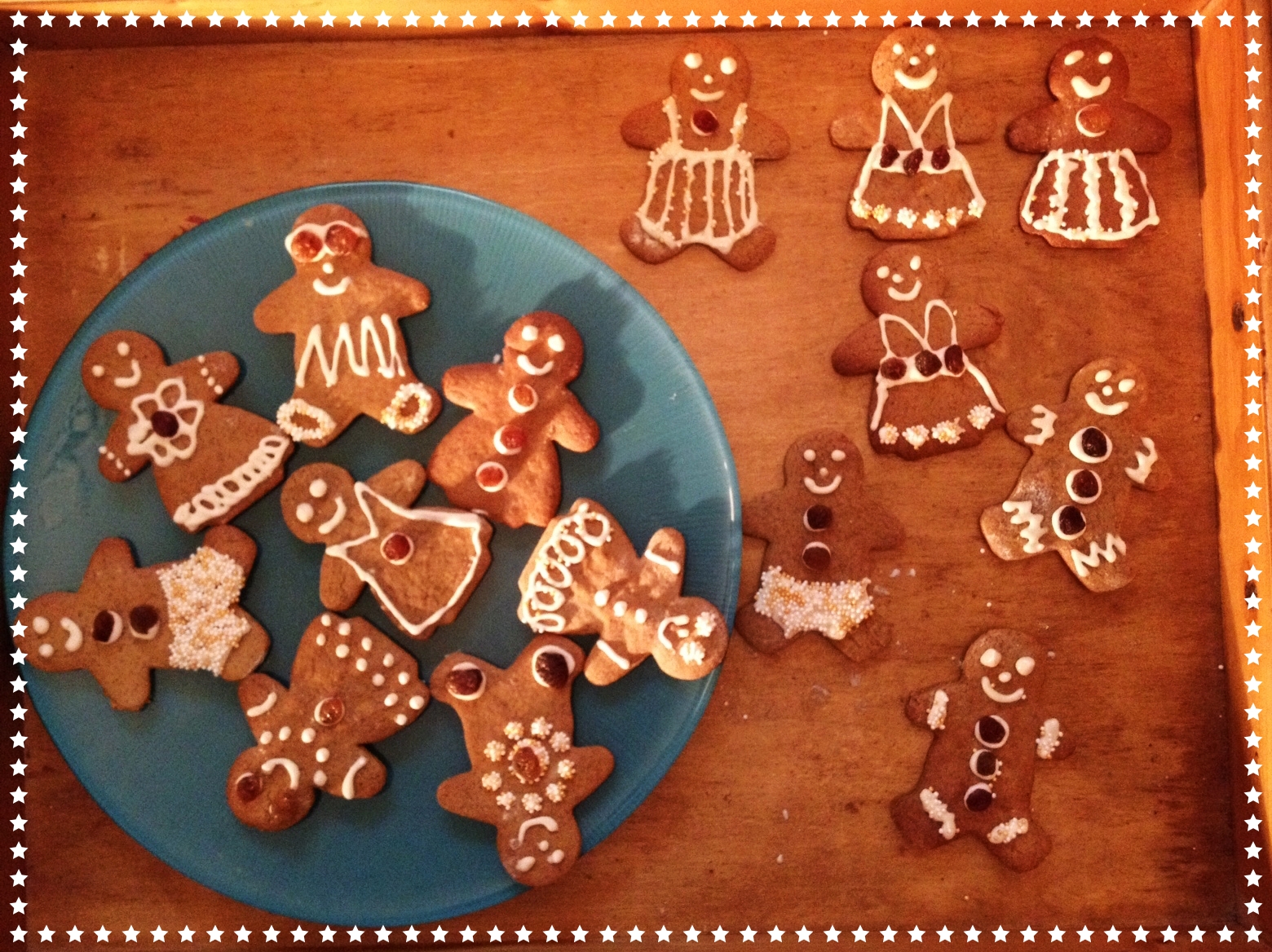
![]()

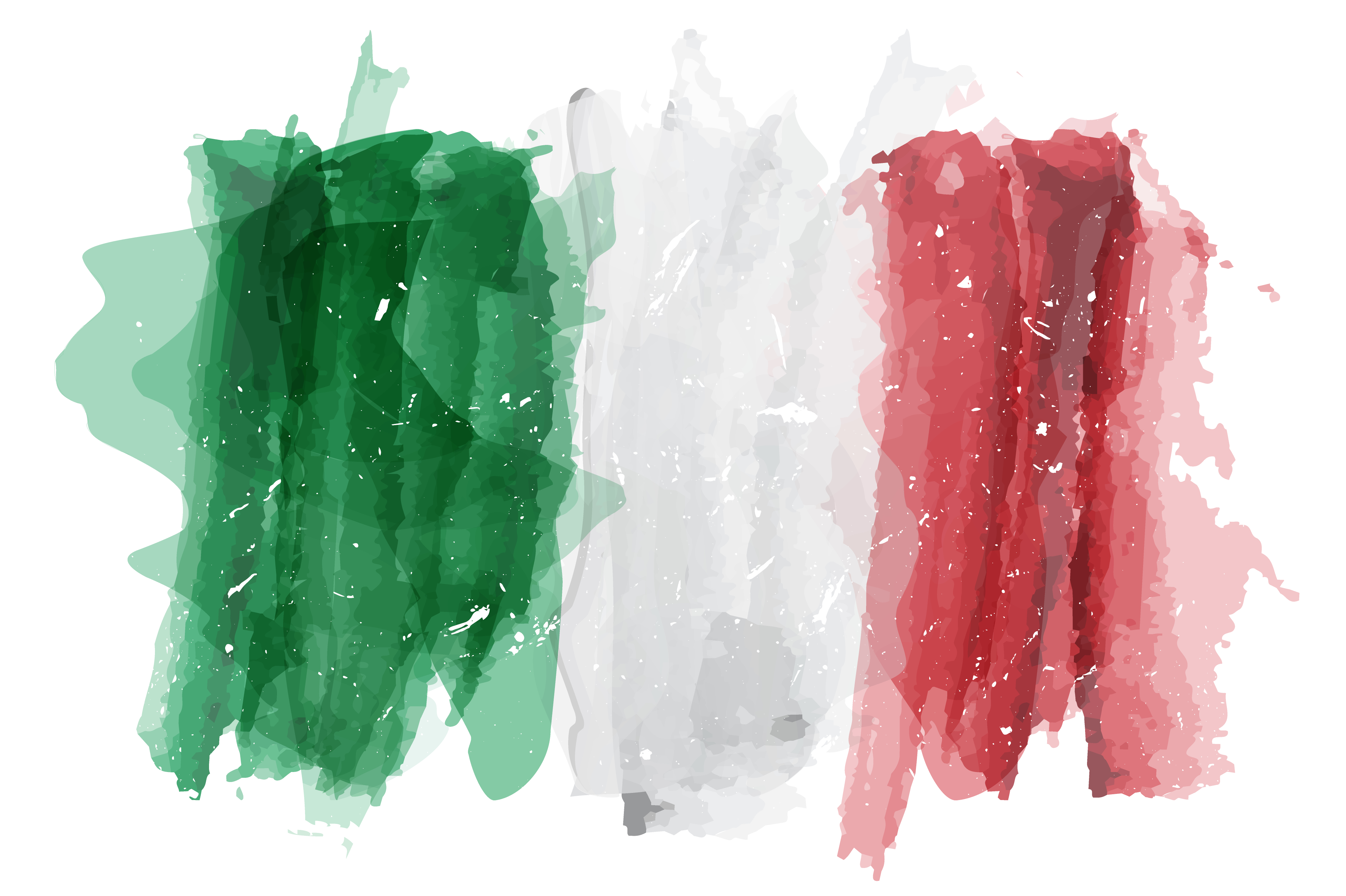
Emma Colucci-Guyon (Italy)
Scientist in the Macrophages and Development of Immunity Unit
 My typical Christmas recipe is from my region of Puglia, in southern Italy. The recipe originated in the province of Bari (even though it has now spread all over the region), where I come from – my home town is Monopoli, on the Adriatic Sea 40km south of Bari.
My typical Christmas recipe is from my region of Puglia, in southern Italy. The recipe originated in the province of Bari (even though it has now spread all over the region), where I come from – my home town is Monopoli, on the Adriatic Sea 40km south of Bari.
The recipe is for "cartellate", simple little biscuits made from flour, oil and white wine. You make a dough which you stretch out and roll up in the form of a crown or spiral. The biscuits are then fried and covered with "cooked wine" (a mulled wine-style preparation), honey or other toppings. Cartellate were always a firm fixture on the Christmas table in my parents' house – homemade by my Mu m – and they are a very happy childhood memory.
m – and they are a very happy childhood memory.
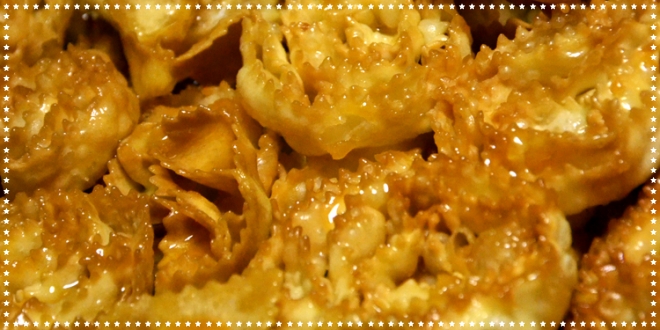
![]()

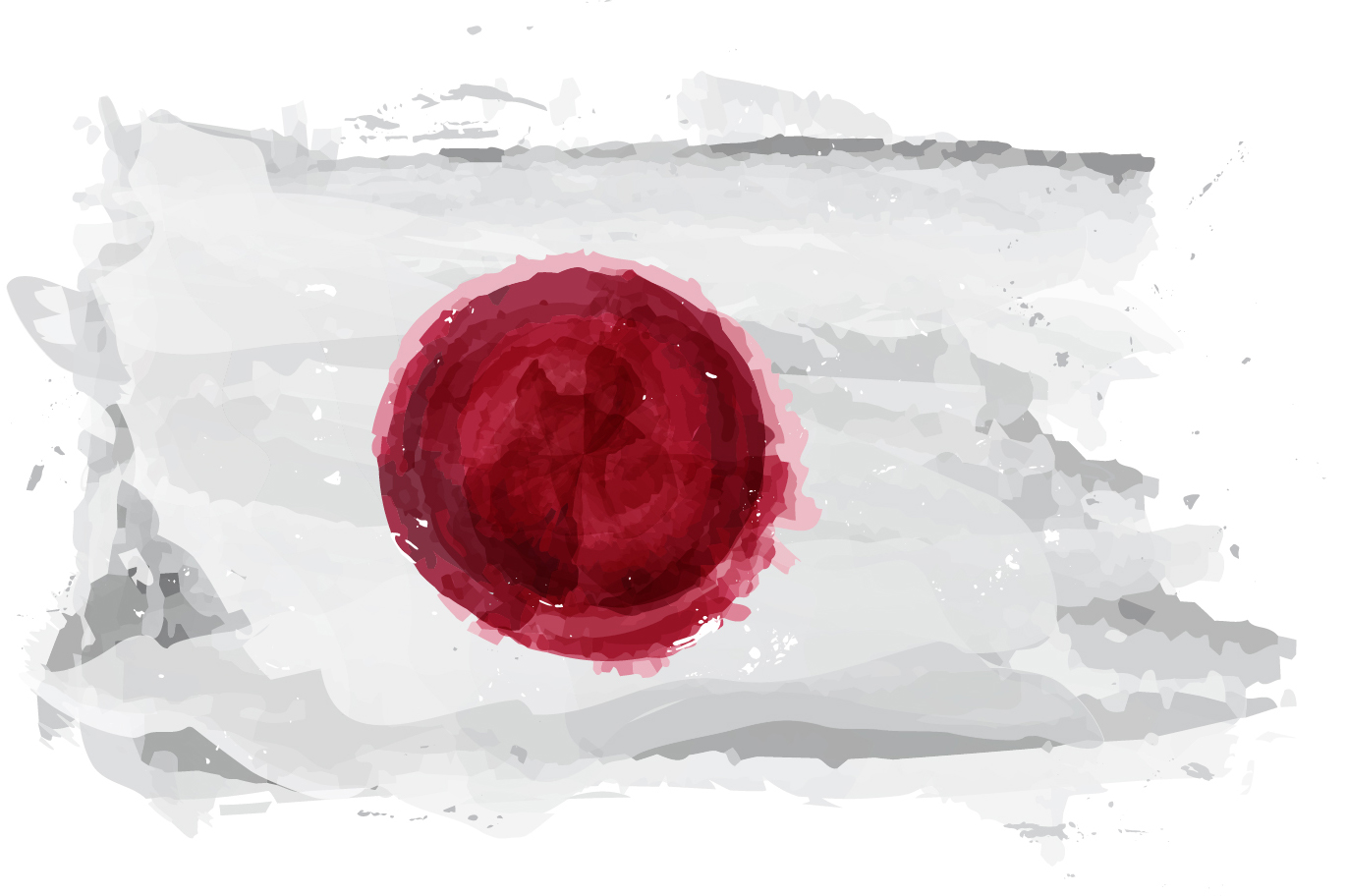
Emi Carlot-Murayama (Japan)
Scientist in the Macrophages and Development of Immunity Unit
 The origins of Osechi Ryori, a selection of traditional Japanese foods enjoyed at New Year, go back to the Heian period (8th to 12th century), when food was offered to the gods to thank them for a good harvest. Nowadays, each part of the dish, arranged and presented over three levels, is carefully wrapped. Each component has a symbolic meaning (banishing evil spirits, promoting longevity, bringing good luck, etc.).
The origins of Osechi Ryori, a selection of traditional Japanese foods enjoyed at New Year, go back to the Heian period (8th to 12th century), when food was offered to the gods to thank them for a good harvest. Nowadays, each part of the dish, arranged and presented over three levels, is carefully wrapped. Each component has a symbolic meaning (banishing evil spirits, promoting longevity, bringing good luck, etc.).
The first three days of the year were days of total rest, so as not to disturb the gods and so that people could recuperate before returning to their hard work in the fields.
These three days are now firmly established as a period of rest at home with the family, and they can be considered as the equivalent of Christmas in Europe. Scientific experimentation and cooking have several things in common!

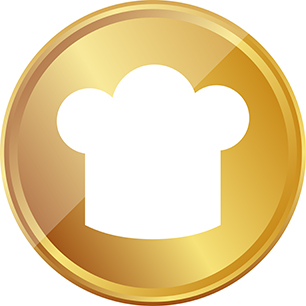 Why not try it out with your family during the holidays?
Why not try it out with your family during the holidays?
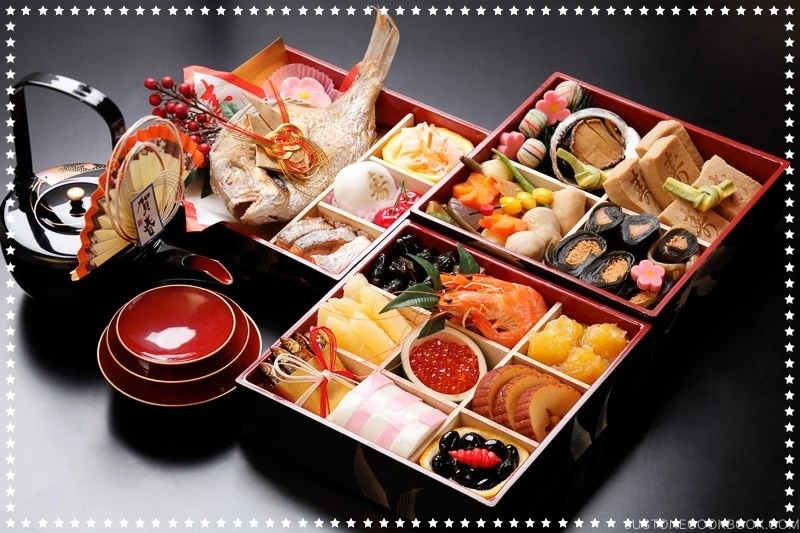
![]()

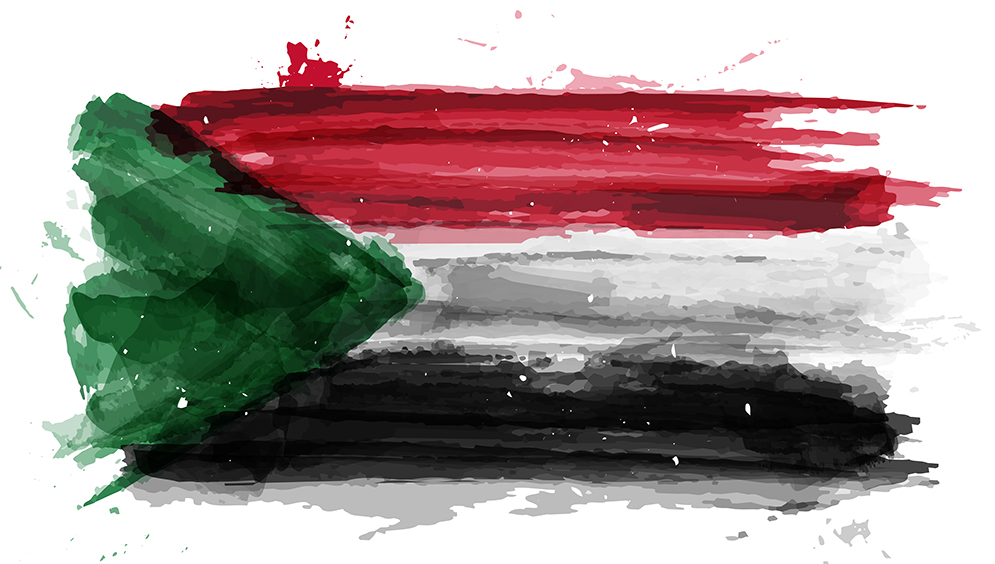
Fatma Haidara (Sudan)
Pasteur International Network Association (PINA)


Sudan has always been a majority Muslim country, even before the separation with South Sudan, which gained independence in 2011 and is predominantly Christian and animist.
But Christmas is celebrated as a holiday as much as the festivals of Eid al-Adha (Tabaski) and Eid al-Fitr (which marks the end of Ramadan) and the Gregorian New Year. And for these festivals, like for all celebratory occasions – weddings, baptisms, etc. – every family makes Kahk.
These are cookies, a bit like shortbread, ideally made with clarified butter (ghee), which gives them a particular texture and flavor. My family secret is to add some cardamom to make them specially fragrant. They are sweet – and so tasty! They are served with milky tea, also flavored with cardamom, or with cloves or cinnamon.
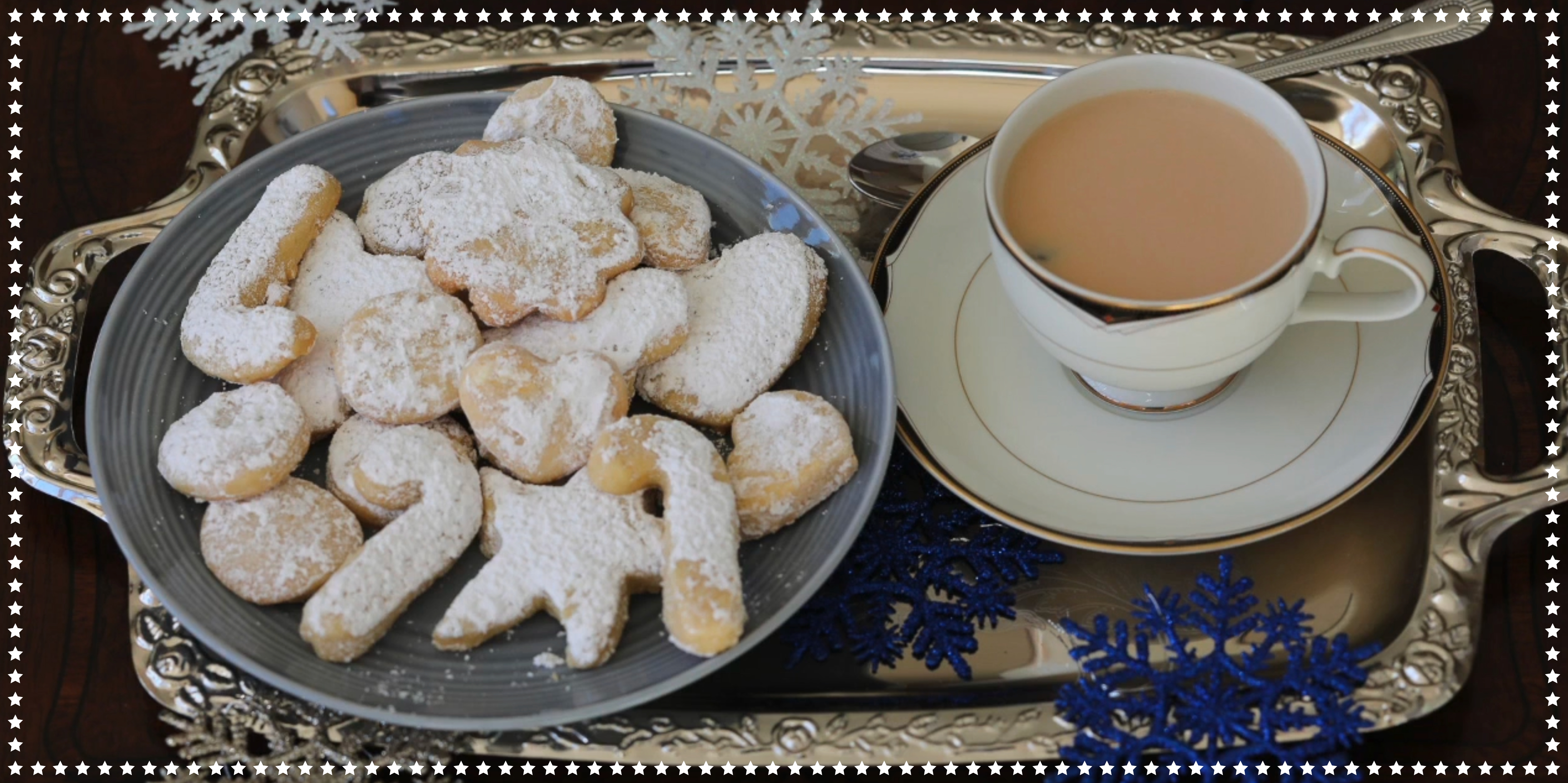
![]()

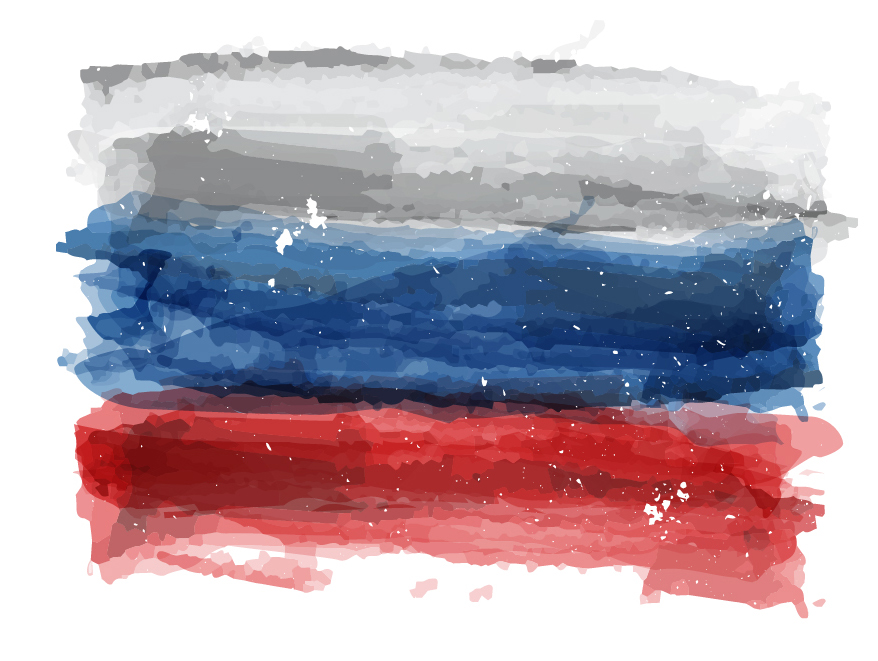
Ksenia Bagrintseva (Russia)
MD PhD, Expert in scientific writing, Grants Office
 The "Olivier" salad, number 1 on this list, is a must for festivities in Russia!
The "Olivier" salad, number 1 on this list, is a must for festivities in Russia!
In 1860, Lucien Olivier was the chef of the famous French restaurant "L'Ermitage" in Moscow. He created a "luxury" version of this salad, which depending on the season could contain veal tongue, caviar or crayfish tails. Today's "Olivier" salad is much easier to prepare, but the Russians love it so much that we always serve it on festive occasions!

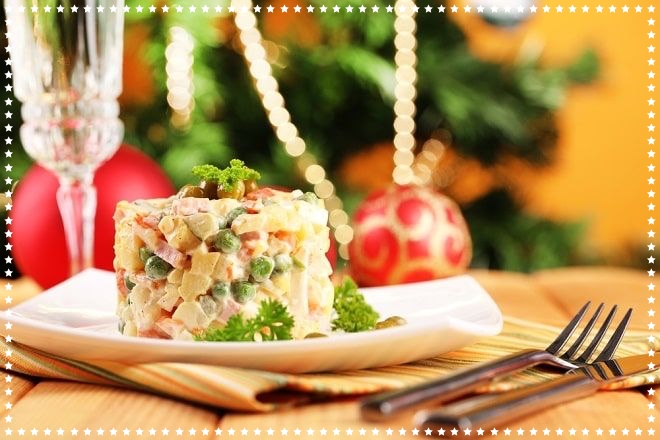
![]()


Kelly Prifti (United-States)
Project Manager, Grants Office International

I'm American, and my recipe from home is for eggnog. This is a drink made with milk, cream, eggs and sugar. It exists in France too, where it's known as "lait de poule" (literally "hen's milk").
According to my research, it was originally a British drink that was served in the American colonies in the 18th century.
The website explains that "Eggnog was particularly popular around Christmastime because of its warm temperature and the addition of flavors, like cinnamon, nutmeg, and vanilla bean, that embodied the winter season. Since then, eggnog has been synonymous with holiday festivities." Nowadays, as far as I know, it's generally served chilled.

It can be made with or without alcohol (whiskey or rum). If you're planning to add alcohol I would advise reducing the amount of sugar in the recipe.
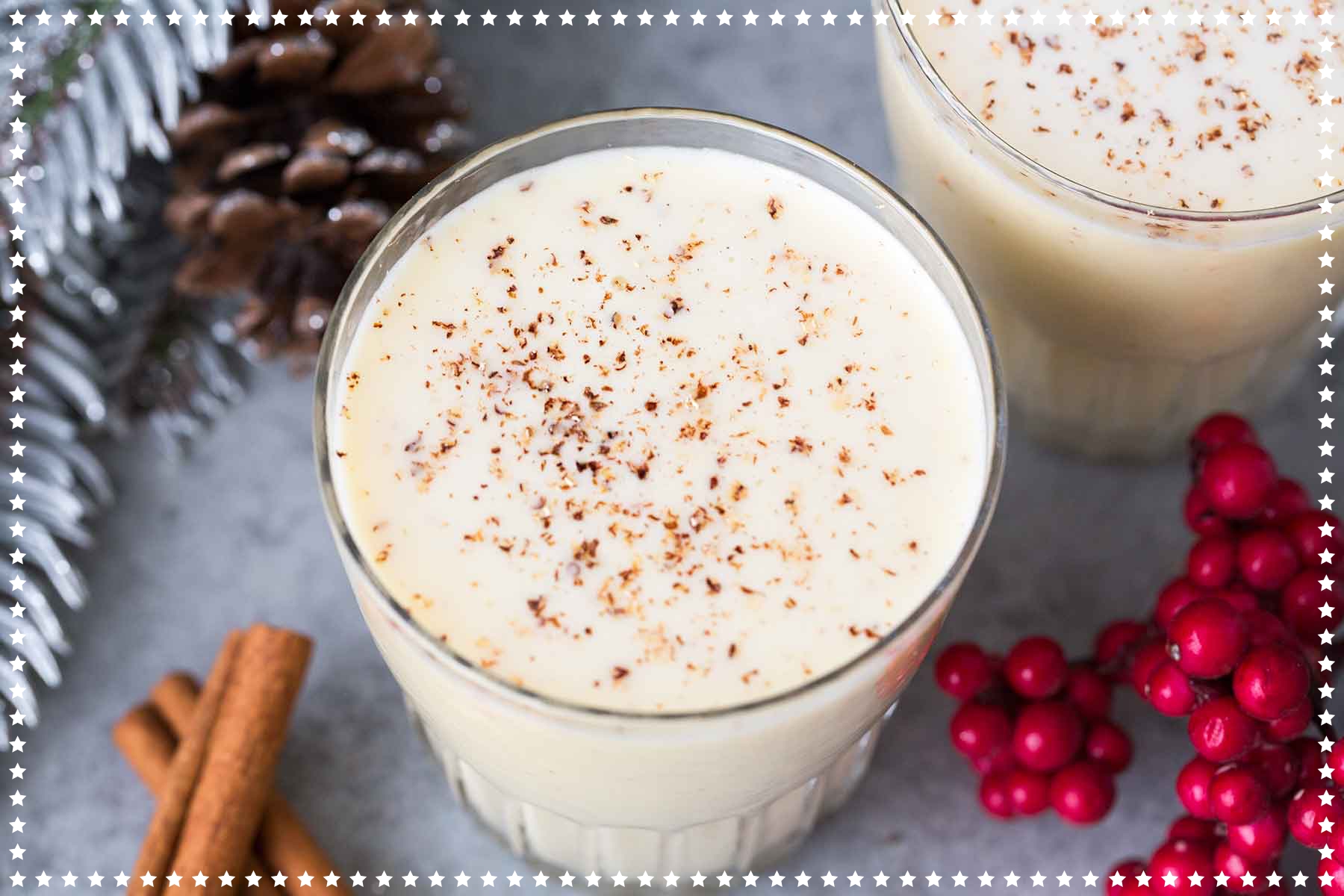
![]()

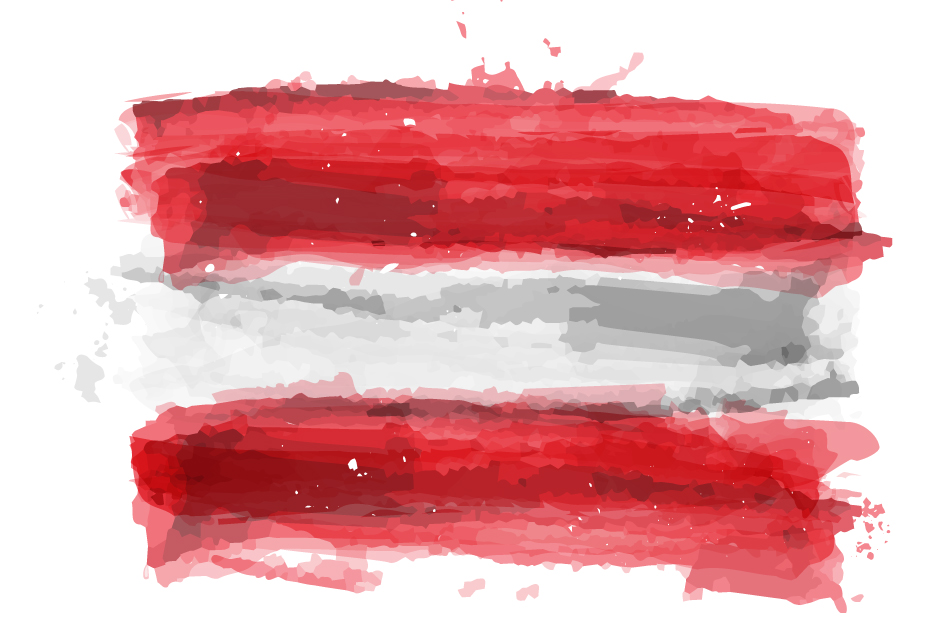
Katharina Kopf (Austria)
Grants Office

 During the Advent period (the weeks leading up to Christmas), Austrians make a variety of little Christmas cookies. « Vanillekipferl » are one of the most popular.
During the Advent period (the weeks leading up to Christmas), Austrians make a variety of little Christmas cookies. « Vanillekipferl » are one of the most popular.
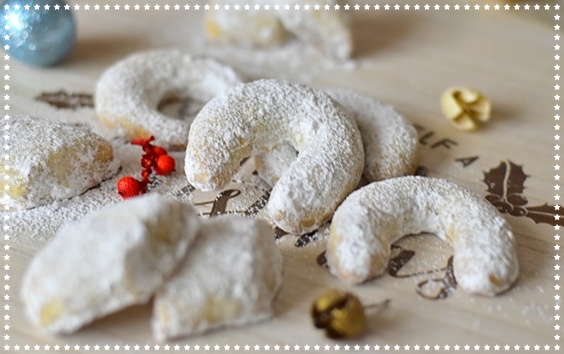
![]()
 If you would also like to share the specialties that you are planning to make for the festive season – whether regional, national or international – , simply take a photo of them and add the signature that you must all know off by heart by now: "Let's keep in touch, #PasteuriansTogether" and send them to gardonslelien@pasteur.fr. If we receive enough contributions we might compile them in a book to get 2021 off to a delicious start!
If you would also like to share the specialties that you are planning to make for the festive season – whether regional, national or international – , simply take a photo of them and add the signature that you must all know off by heart by now: "Let's keep in touch, #PasteuriansTogether" and send them to gardonslelien@pasteur.fr. If we receive enough contributions we might compile them in a book to get 2021 off to a delicious start!

 Online Christmas Party!
Online Christmas Party!

Fun, festivity and frolics! What better time to keep in touch than over Christmas and New Year? And extraordinary times call for extraordinary measures – we will be organizing an online Christmas Party on December 22 at 5.30pm.
Open to everyone but particularly aimed at young scientists from other countries who may not have the opportunity to spend the festive season as they would like to, the party will be a virtual event hosted in English by The Recess College (the organizer of the Institut Pasteur's informal online chat sessions).
To sign up for the Christmas Party, go to the Pasteurians & Alumni platform

 Stars in your eyes
Stars in your eyes
As we approach the festive period, decorations can be a wonderful way of lifting our spirits and getting our creative juices flowing. And as we all know, creativity is something that is not lacking among the Institut Pasteur community!
With the support of the Creative Arts section in the Institut Pasteur's Social and Economic Committee, we are encouraging you to share your artistic talents with your colleagues – show off your best decorative creations to help make sure the stars are shining on us over Christmas and as we head into 2021.
 And to emphasize the solidarity and unity of the Institut Pasteur community, add the signature that continues to be our motto throughout this period: "Let's keep in touch, #PasteuriansTogether."
And to emphasize the solidarity and unity of the Institut Pasteur community, add the signature that continues to be our motto throughout this period: "Let's keep in touch, #PasteuriansTogether."
You can send your creations to gardonslelien@pasteur.fr– we will look forward to receiving them along with snapshots of your culinary exploits!
